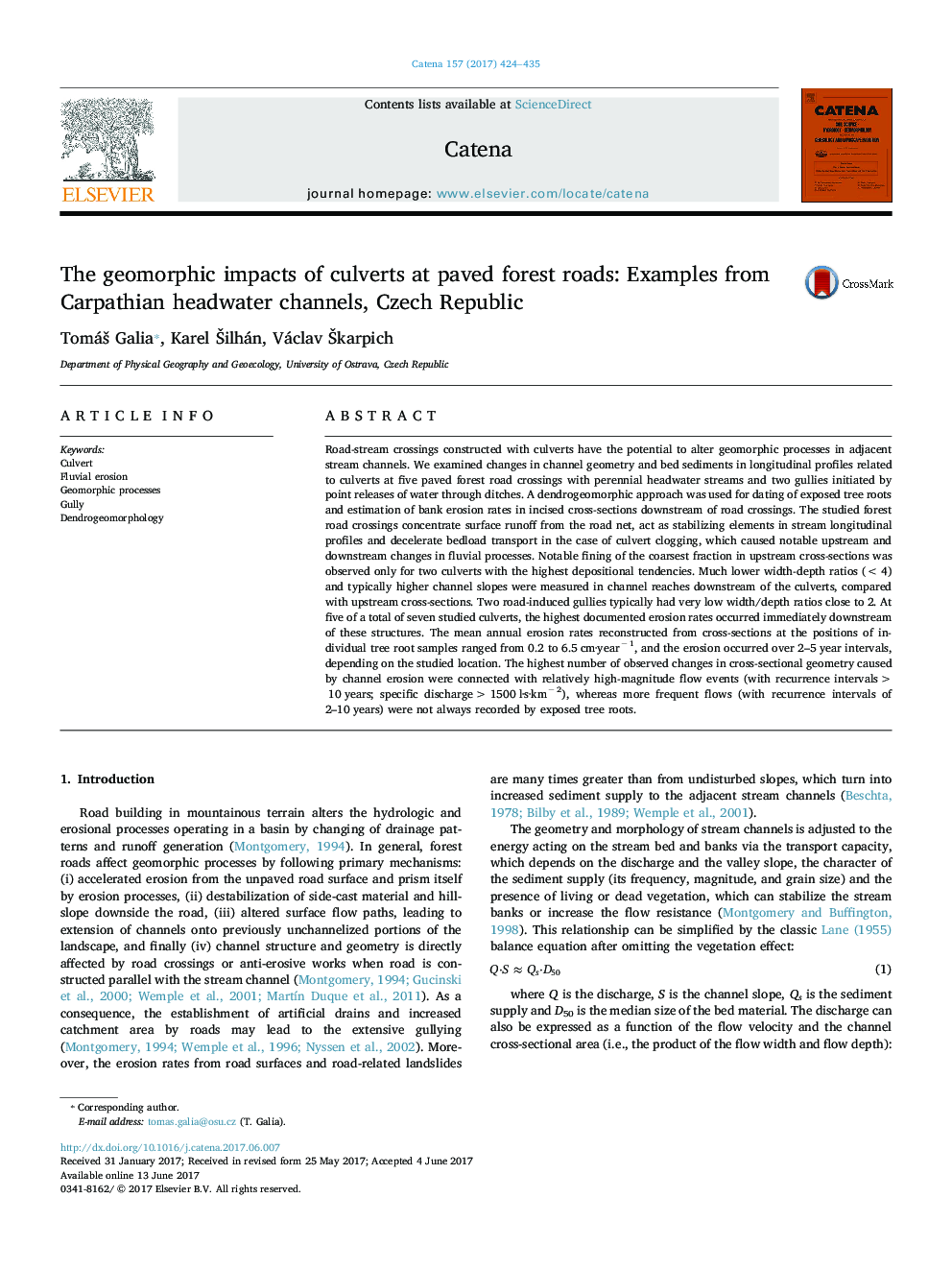| کد مقاله | کد نشریه | سال انتشار | مقاله انگلیسی | نسخه تمام متن |
|---|---|---|---|---|
| 5769879 | 1629197 | 2017 | 12 صفحه PDF | دانلود رایگان |
- forest road culverts notably altered downstream channel geometry
- mean annual erosion rates downstream were established (0.2-6.5Â cm per year)
- downstream width/depth ratio was usually lower in gullies than in perennial streams
- flow events with >Â 10Â y recurrence intervals were more important for channel erosion
Road-stream crossings constructed with culverts have the potential to alter geomorphic processes in adjacent stream channels. We examined changes in channel geometry and bed sediments in longitudinal profiles related to culverts at five paved forest road crossings with perennial headwater streams and two gullies initiated by point releases of water through ditches. A dendrogeomorphic approach was used for dating of exposed tree roots and estimation of bank erosion rates in incised cross-sections downstream of road crossings. The studied forest road crossings concentrate surface runoff from the road net, act as stabilizing elements in stream longitudinal profiles and decelerate bedload transport in the case of culvert clogging, which caused notable upstream and downstream changes in fluvial processes. Notable fining of the coarsest fraction in upstream cross-sections was observed only for two culverts with the highest depositional tendencies. Much lower width-depth ratios (< 4) and typically higher channel slopes were measured in channel reaches downstream of the culverts, compared with upstream cross-sections. Two road-induced gullies typically had very low width/depth ratios close to 2. At five of a total of seven studied culverts, the highest documented erosion rates occurred immediately downstream of these structures. The mean annual erosion rates reconstructed from cross-sections at the positions of individual tree root samples ranged from 0.2 to 6.5 cm·yearâ 1, and the erosion occurred over 2-5 year intervals, depending on the studied location. The highest number of observed changes in cross-sectional geometry caused by channel erosion were connected with relatively high-magnitude flow events (with recurrence intervals > 10 years; specific discharge > 1500 l·s·kmâ 2), whereas more frequent flows (with recurrence intervals of 2-10 years) were not always recorded by exposed tree roots.
Journal: CATENA - Volume 157, October 2017, Pages 424-435
